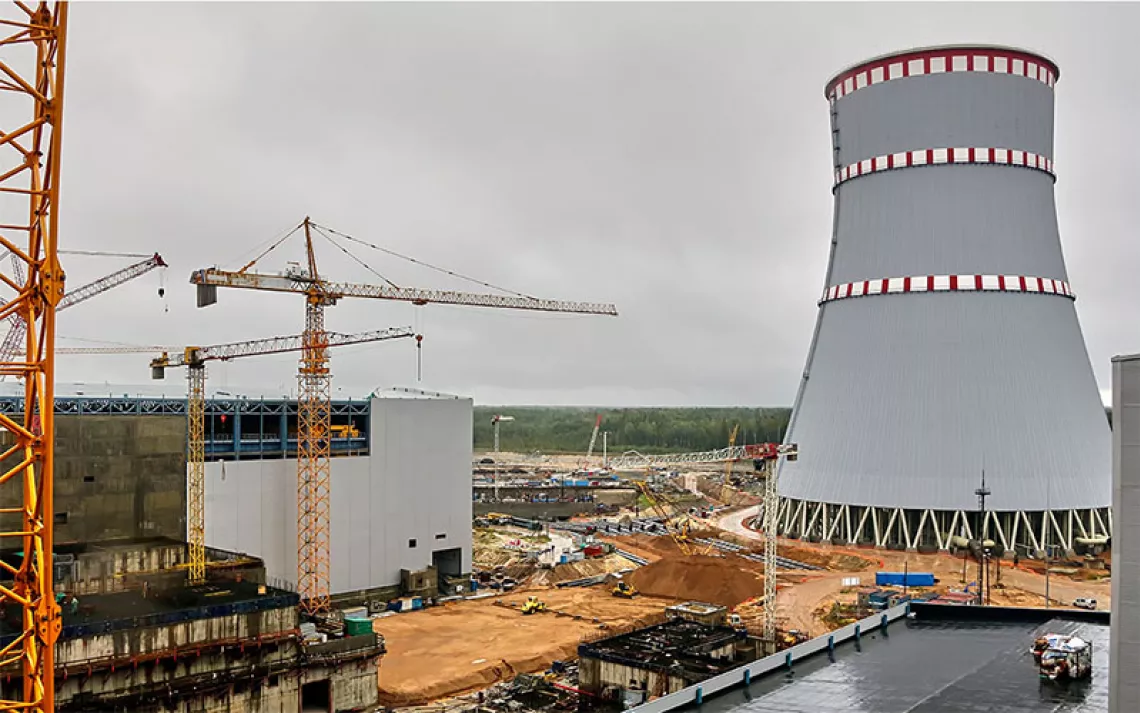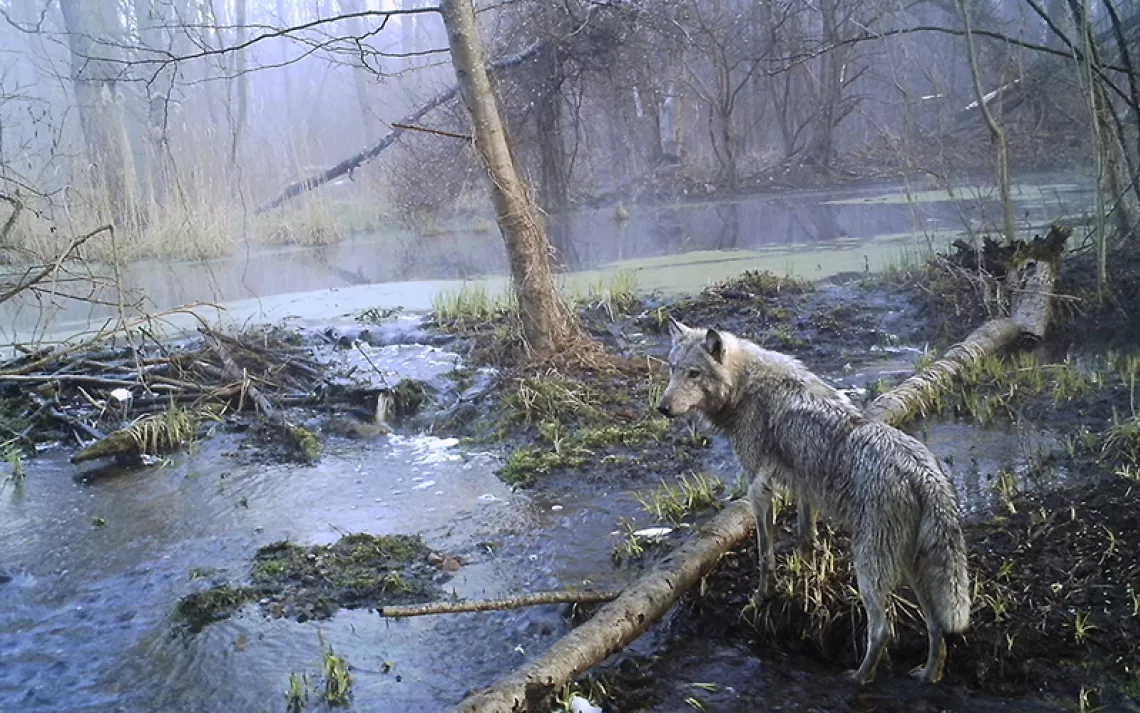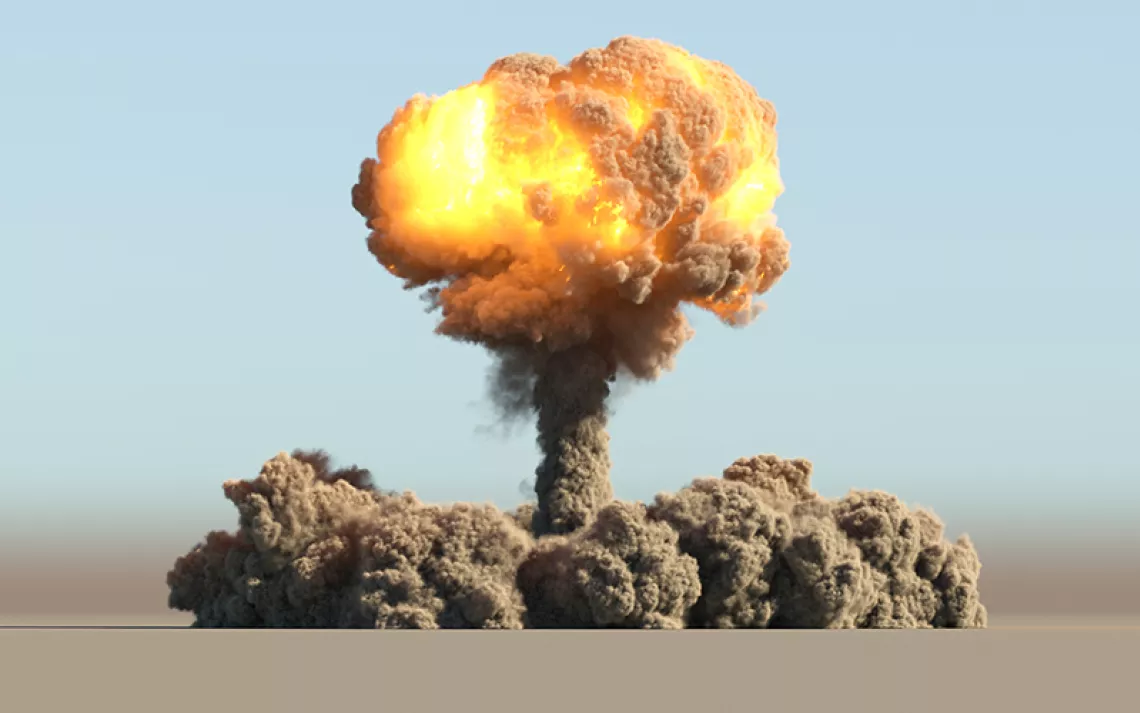The Rad-Waste Trucks Are Rolling
And the cleanup crews are already preparing for spills

Image courtesy of the Canadian Nuclear Safety Commission
Trucks carrying highly radioactive liquid waste have started their secret journeys from Chalk River, Ontario, across several states on their way to a reprocessing facility in Aiken, South Carolina.
Although the Department of Energy will not disclose the routes for transporting this weapons-grade material, citizens’ groups monitoring the process regard the most likely crossings from Canada as either the Peace Bridge in Buffalo or the Thousand Islands Bridge over the Saint Lawrence River. Over the next four years, up to 250 shipments will take routes south from those points through metropolitan areas that could include Syracuse, New York; Pittsburgh, Pennsylvania; Morgantown, West Virginia; Charlotte, North Carolina; and Columbia, South Carolina. Accidents or sabotage along the way could result in release of highly radioactive elements into air, soil, or water, as the Sierra Club and six other environmental organizations pointed out in an unsuccessful lawsuit to force the DOE to produce an Environmental Impact Statement.
The lawsuit pointed out the special hazards of this unprecedented transport of radioactive waste on routes across bridges and elevated highways “at a height which exceeds the safety standards for a dropped cask onto an unyielding hard surface.” The waste’s “liquid form could make containment in the event of a spill or other adverse event nearly impossible,” says U.S. Representative Brian Higgins, who represents the Buffalo area. Higgins has joined with New York Senator Kirsten Gillibrand in asking Energy Secretary Rick Perry to reverse the Obama administration’s approval of these shipment transports without conducting an environmental impact statement.
“The unprecedented attempt of moving 6,000 gallons of a radiotoxic solution across over 1,000 miles requires thorough scrutiny,” they said in a May 18 letter to Perry.
According to a spokesperson for the National Nuclear Security Administration, states along the way are notified of coming shipments on routes approved by the Nuclear Regulatory Commission, and state police/highway patrol provide security in each state. In addition, acting press secretary Steven Wyatt said in an email, DOE has “provided specialized training courses for emergency responders along the route.” A spokesperson for the North Carolina Department of Public Safety says the department “has been preparing for this for a few years now” and received notice of the first shipment in mid-April.
A problem has already surfaced: According to the federal Defense Nuclear Facilities Board, an “unexpected hotspot” was detected on the container to which one shipping cask was transferred at the Savannah River Site.
“The very first delivery has exposed a substandard, flawed piece of equipment that could well threaten worker safety,” said Terry Lodge, one of the attorneys who filed suit on behalf of the environmental groups. “We demanded a genuine scientific assessment of the wisdom of moving this highly radioactive liquid at all, but DOE swore that its containment, transport, and handling systems, structures, and components would provide adequate safety. This incident gives the lie to the court's unsupported ruling that all bases were covered.”
 The Magazine of The Sierra Club
The Magazine of The Sierra Club



